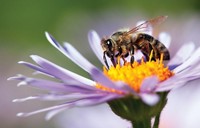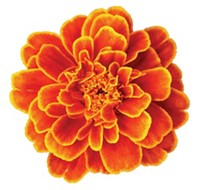Advertisement
Grab your lab coat. Let's get started
Welcome!
Welcome!
Create an account below to get 6 C&EN articles per month, receive newsletters and more - all free.
It seems this is your first time logging in online. Please enter the following information to continue.
As an ACS member you automatically get access to this site. All we need is few more details to create your reading experience.
Not you? Sign in with a different account.
Not you? Sign in with a different account.
ERROR 1
ERROR 1
ERROR 2
ERROR 2
ERROR 2
ERROR 2
ERROR 2
Password and Confirm password must match.
If you have an ACS member number, please enter it here so we can link this account to your membership. (optional)
ERROR 2
ACS values your privacy. By submitting your information, you are gaining access to C&EN and subscribing to our weekly newsletter. We use the information you provide to make your reading experience better, and we will never sell your data to third party members.
Chemical Communication
The molecule that makes locusts swarm
The pheromone 4-vinylanisole prompts crop-destroying insects to gather
by Bethany Halford
August 14, 2020
| A version of this story appeared in
Volume 98, Issue 31

In eastern Africa, southwest Asia, and the Middle East, locusts are gathering in numbers not seen in decades. As these insects swarm—tens of billions of them at a time—they destroy crops, eating everything in sight in parts of the world where food is already scarce. Scientists have tried for years to unravel the process that changes solitary grasshoppers into so-called gregarious locusts that do so much damage. Researchers led by Xianhui Wang and Le Kang of the Chinese Academy of Sciences now report that the small molecule 4-vinylanisole signals the insects to swarm (Nature 2020, DOI: 10.1038/s41586-020-2610-4). The researchers were able to pinpoint 4-vinylanisole as the key pheromone from a brew of 35 volatile chemicals that Locusta migratoria emits. The compound strongly attracts locusts, regardless of age or sex. In their gregarious state, locusts readily emit 4-vinylanisole, but if four or five locusts in their solitary state are in close proximity, they will produce the compound too. The researchers suggest that 4-vinylanisole might be used to lure the insects away from crops and trap them. Wang and Kang’s team also identified the olfactory receptor, called OR35, which the locusts use to detect 4-vinylanisole. When the researchers knocked out the gene that makes OR35 in locusts, the insects didn’t respond to the pheromone. The result suggests that compounds that block OR35 might prevent swarms.





Join the conversation
Contact the reporter
Submit a Letter to the Editor for publication
Engage with us on Twitter